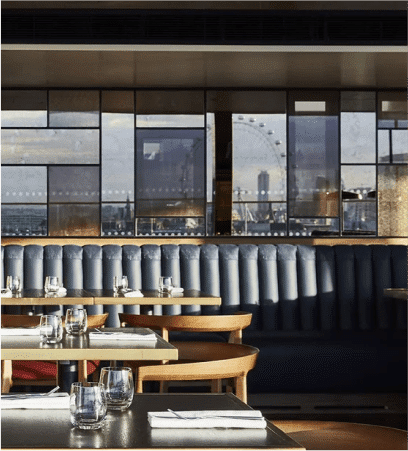Attracting the Asian Luxury Traveller to your Hotel

12/08/24
VICTORIA BURROWS (FREELANCE FOOD & TRAVEL WRITER)
READING TIME: 12 MINUTES
City AM recently reported that luxury hotels are seeing a decline in US and Middle East travellers, due to upheaval on the world stage. With international travellers being an important part of the audience mix to our burgeoning London and UK travel clients, it is an important time to look to the Asian luxury market as an increasingly significant audience.
Most Asian travellers travel within Asia – a recent study found 60% of Chinese travellers choose to travel in their home continent. Japan, Thailand, and South Korea are the hottest tourist spots for Asian travellers this year (and for a few years now).
That leaves 40% – but when it comes to China, that is still a lot of travellers. Chinese were world’s biggest travellers before Covid hit. The extra good news is that 40% is quite a big leap from what it was a year ago when only 25% of respondents said they planned to travel beyond Asia.
Within that ‘rest of world’ category, Europe has made good strides – whereas last year 15% of Chinese travellers were wanting to visit Europe, spring 2024 saw 27% choosing Europe over elsewhere.
Direct flights to the UK from China resumed only in August 2023. China’s post-pandemic opening up was significantly later than ours, and China’s international air travel recovery lagged behind other Asian countries, but now things are picking up and Chinese tourists have been indulging in ‘revenge travel’ – travelling far and wide.

WHEN ARE ASIANS TRAVELLING?
While the old stereotype of Asian travellers on big package tours still exists, there are far more couples, families and solo travellers these days. As so many more people speak and read English these days, especially younger and more wealthy travellers, getting about by themselves is so much easier.
Conservative estimates say 10 million out of 1.3 billion Chinese speak English – that’s less than 1%. But other estimates put it at closer to 400 million Chinese having some level of English. Affluent and younger Chinese are more likely to speak English.
Asia has the highest number of solo travellers in the world. They are mainly youngsters aged 18 to 26, and they’re mainly travelling within Asia, but those who come to the UK consider London to be safe and appealing. These solo travellers are looking to relax and immerse themselves in local culture.
Interestingly, Chinese visitors tend to be younger than the average visitor to the UK. In 2022, 57% of visits from China were made by people aged 16-34 years old.
So far we’ve covered travellers mainly from East Asia, but we should also talk about India. I lived in India five years from 2010 to 2015 and was just back for three weeks in February, and changes in the country are marked.
More Indians than ever before are travelling; in the first three months of 2024, 97 million passengers travelled through Indian airports. Just 10 years ago, the same figure would have taken a whole year to achieve. So Indian travellers ought to be increasingly on your radar.
WHAT ARE ASIAN TRAVELLERS LOOKING FOR?
The two big sell-factors are the two “C”s – convenience and culture.
Firstly, convenience – in terms of direct flights, visa-free entry, and streamlined application processes. These are perhaps not in the remit of hoteliers, but anything that answers the question, ‘What would make the experience for Asian guests smoother and easier?’ is the right direction.
You could perhaps offer services that make guests’ travels more convenient by having a concierge who speaks Mandarin, or send out instructions on how to reach the hotel using London’s public transport in Chinese, or whichever target market you’re going for – Japanese, Thai or Korean, for example. Any materials in multiple languages is helpful, and now with many hotels embracing technology and putting information on apps or in-room on tablets, this is simpler than ever.
Interwoven with convenience is perceived value, which is really still key for most Asian travellers. Asian tourists are willing to spend, even Chinese with their currency under pressure and youth unemployment on the rise, as long as they perceive it as having value.
Asian travellers are going for convenient add-ons, such as breakfast and early check-ins for families. They’re willing to spend to make their holiday more relaxing and enjoyable, they’re just not being frivolous about it.
This is particularly noticeable with millennial and Gen Z tourists, who have quite defined travel traits: they are hyper-focused on personalised, value-added experiences such as spas or sleeping pods at the airport. They treat time spent waiting for flights as part of the overall travel experience.
The younger generations and the middle-aged in Asia, especially at the luxury level, are paying more attention to sustainability. Asia is for sure behind Europe when it comes to sustainability awareness, but it will only get more important.
I often write articles for the South China Morning Post in Hong Kong on sustainability in restaurants in Hong Kong, Macau and beyond. I was commissioned for a 2,000-word piece for the newspaper’s Sunday Post magazine on how climate change is affecting the world’s best chefs and recently wrote a full feature for Singaporean luxury lifestyle magazine, Prestige, on really unusual volunteering opportunities around the world, such as tracking the last remaining snow leopards in Kyrgyzstan. 80% of Prestige Singapore’s readers are between 35 and 54 years old, slightly more women than men readers.
All three luxury lifestyle magazines I write for in Singapore have a strong focus on ‘luxury with a conscience’ (if there is such a thing is a debate for another day), whether that’s environmental or social.
Gen X tourists are the ones going for full luxury, although they travel less. Often travelling with family, they are likely to hunt out family-friendly activities and options suited to children.
On to the second “C”: culture – this is a huge pull for Asian travellers. They want to immerse themselves in the culture of wherever they’re visiting. Here in the UK, they want to revel in all those quintessential symbols of Britishness – Big Ben, Tower Bridge, the British Museum and the V&A. They like the “romance” of Buckingham Palace and the crown jewels, and the elegance of Harrod’s and the Regent’s Park rose garden. The younger generation are also interested in modern Britishness – The Shard, the Tate Museums, British fashion.
Many Asians also have a fascination with the Royal family – my luxury lifestyle magazine editors love it when I can drop in something connected to royal culture. I did a feature for luxury lifestyle magazine The Peak last year, for example, on how Singaporean visitors to the UK could share in the Coronation celebrations, from royal-themed afternoon teas to dinners to special release ales and whisky.
Particularly after the long restrictions due to Covid, Asian travellers are attracted by unique things a country has to offer – they are looking for fun, meaningful, unique experiences over purchases. (They do, however, still spend on shopping, especially local souvenirs, clothes and cosmetics.)
Asian travellers are increasingly keen on seeing natural scenery, especially Gen Z and millennial travellers who strongly favour nature-based and cultural experiences.
Getting out into nature isn’t a straightforward fit with London hotels, but perhaps there’s an opportunity to partner with a hotel in the countryside and offer a stay package, or arrange a day trip out of London with a guide that speaks the language of the region you’re looking to attract.
Activities such as sports and outdoor adventures are not that appealing to Asian travellers when travelling.
Food
One aspect of culture that is huge for Asian travellers is food. And this is where hotels really have an opportunity to appeal to, and please, their guests. I can’t overstate how important food is in most Asian cultures.
Just last month the first-ever high-speed sleeper train ran from Hong Kong to Beijing, and a South China Morning Post news journalist took the journey. Amusingly, he was medium impressed with the train but what really captured his attention was the food – actually not the food on the train but the fact that in mainland China you can order food on an app a couple of hours before you reach the various stopping stations and delivery people will meet you on the platform and pass the food to you to eat back on the train. This taps in to convenience again – East Asians are used to these entrepreneurial systems that make life on the go easy.
When it comes to food, there are two aspects that hotels could capitalise on:
Firstly, traditional dishes that let visitors experience local culture – think fish and chips, bangers and mash, and sticky toffee pudding. You could have a section on classic British dishes in your all-day dining restaurant, or put an elevated version of these dishes on the menu of your more fine dining restaurant. Ashley Palmer-Watts’s version of sticky toffee pudding at The Devonshire in Soho, for example, is perfection.
In Hong Kong, the Shangri-la group have run a fun promotion within their all-day dining venues which proved so popular that both their hotels ran it for a second year. They approached classic Hong Kong brands, including a famous noodle shop and a third-generation tofu brand, to do pop-ups within the hotel café. The promotions attracted hotel guests but also locals.
I think this worked so well in Hong Kong because there’s been a strong turn to very local brands as a way to celebrate local identity and culture after the difficult years Hongkongers have had recently. But, still, it serves as a good example of how hotels everywhere can be quite innovative with their activations.
You could also do something with Modern British food – with capital “M” and “B” – as in the approach to food exemplified by restaurants such as St Johns, Lyle’s, 46 Maltby Street, and Quality Chop house: a strong focus on high-quality fresh, local, seasonal ingredients, and cooking that combines tradition with influences from Europe and beyond.
A focus on ingredients is a huge global dining trend, so if you can highlight any unique local producers or farms, and explain where they are based with helpful information for tourists who probably don’t know where many places beyond London are, that could also be some good storytelling.
Four-, six-, or eight- hands dinners are also a big trend at the moment. So many top chefs around the world are doing these very regularly now, and I know of many that sell out within a couple of hours. You need the big names, though, or I would say you need something that’s unique and reflects local culture.
The second way that cuisine could catch the attention of Asian diners is food with an Asian link. Asian people like to eat Asian food and like to see what other Asian people are doing in the UK. Especially Chinese and Indians fit this category.
If you go for a meal at Ikoyi on The Strand, for example, you’ll see most of the guests are East Asians, and surprisingly seeing as the price is steep, quite a young crowd. The chef, Jeremy Chan, doesn’t cook Chinese food but his half-Chinese status means that he’s had attention in the Chinese media. Andrew Wong’s A.Wong is the only Chinese restaurant outside of Asia with two Michelin stars, so he gets coverage in East Asia, too – I’ve written about him many times.
London restaurant chain Dishoom is preserving a cooking culture – the Parsi cafes of Bombay – that is being lost in their homeland, and I know many Indian visitors love to eat there. These are the kinds of stories that marketers can use to bring attention to their offerings.
Where are Asian travellers finding their information?
This depends on region. Indian travellers still often use the services of travel agents and tour operators for bookings, so reaching out to agents might be a good idea.
When it comes to other parts of Asia, and especially China, however, social media is very powerful. As are personal recommendations from friends and acquaintances.
Statistics for China show that with more than 25% of travellers are swayed by recommendations from friends, and nearly 24% are influenced by key opinion leaders and television programmes.
More noticeable are the figures for social media: more than half of Chinese travellers (52%) used Xiaohongshu for destination information, surpassing Douyin (43%), Ctrip (37%), Weibo (26%), and WeChat (23%). Xiaohongshu translates at Little Red Book, and it’s a sharing platform that looks like Instagram but has ecommerce also built in. 70% of Xiaohongshu users are female, and 30 or over in age.
Gen Z and millennial travellers especially are more likely to be influenced by social media than search engines or travel guides. Engaging online video content is powerful. One study found that respondents preferred food-related content, followed by scenery, and culture.

Above:
Vel et commodo odio urna a iaculis. Mi volutpat ultrices dio quis placerat molestie nulla hendrerit etiam sed.


